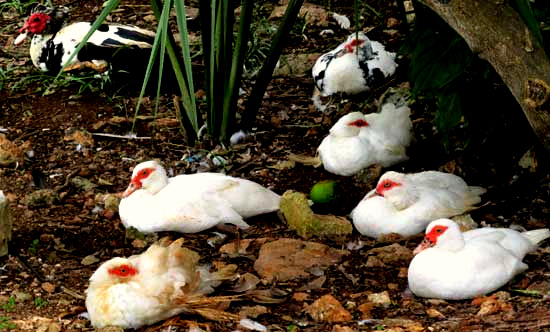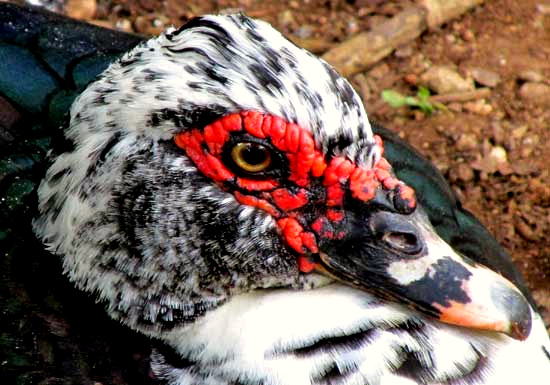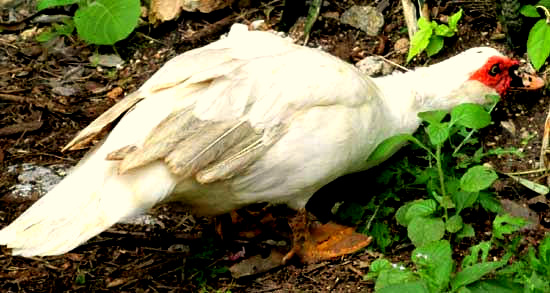Excerpts from Jim Conrad's
Naturalist Newsletter
from the November 6, 2016 Newsletter issued from Rancho Regenesis in the woods ±4kms west of Ek Balam Ruins; elevation ~40m (~130 ft), N20.876°, W88.170°; north-central Yucatán, MÉXICO
MUSCOVY DUCKS
As soon as a visitor to the rancho pulls through the gate and gets out of the car, after dealing with the dogs barking and jumping around, attention often is drawn to a congenial gathering of ducks most likely taking siesta in the shade of an orange tree beside the chicken pen. Below, you can see some of them:

These are Muscovy Ducks, CAIRINA MOSCHATA, and though most of ours are white or mostly so, in most populations they're predominantly black. Wild Muscovies, native from Mexico to South America, are entirely black, except that white wing patches show up when the birds fly. Ours are domesticated, and domesticated birds can display may colors and patterns: There are birds that are blue, bronze, chocolate, lavender, and they come in a variety of pastel colors, plus there are plumages with ripple and pied effects. In the back of our picture you see a couple of pied individuals.
Muscovies are members of an entirely different taxonomic "tribe" from Mallards, and so display several features not encountered among most other domesticated ducks. The feathers atop their heads can be raised into a kind of crest. Except that sometimes females deliver half-hearted quacks, normally the only sound they make is a hiss. Back on the farm in Kentucky we used to call them Whispering Ducks. Maybe their most noticeable physical feature is the red, fleshy region around their eyes and at the beak's base, shown handsomely below:

Why do we have Muscovies here at the rancho? Besides the fact that they make a friendly presence and don't cause much trouble -- though sometimes they poop where you wish they wouldn't -- when they're not resting they're wandering around looking for food, which often consists of critters we'd rather not have -- flies, maggots, mosquitoes, and bugs and spiders of all sorts. Because of the livestock here we have big tick problems, and I'm sure I've seen them pecking ticks from the tips of grassblades along pathways. Below, you can see one at work peeping beneath a leaf:

I've also seen them eating low-hanging Chaya leaves, and soft, new squash leaves, so I try to keep them out of the garden. I bet they'd enjoy the lettuce beds. The other day one of the rancho's cats killed a Social Flycatcher, leaving only a wing with its long primary feathers. A Muscovy came along, gobbled down the whole wing, spending a minute or so with the primaries poking from his beak, as the wing inched it way down the esophagus.